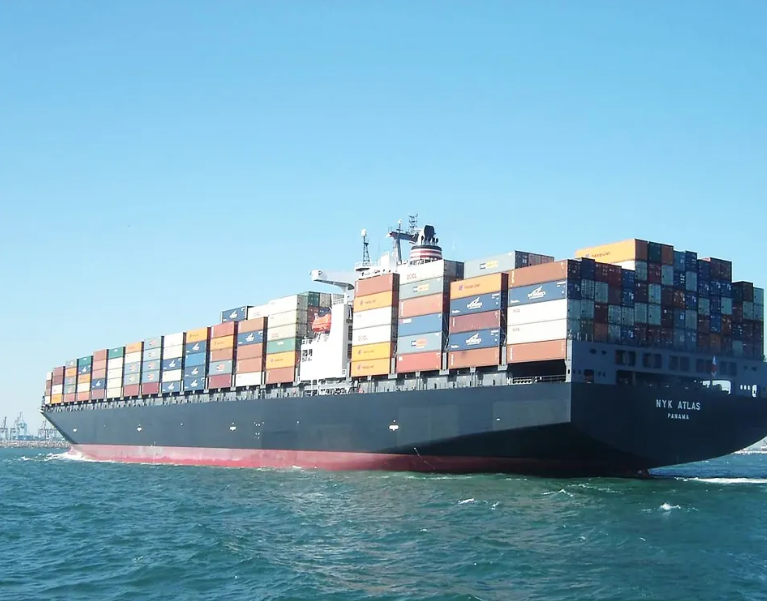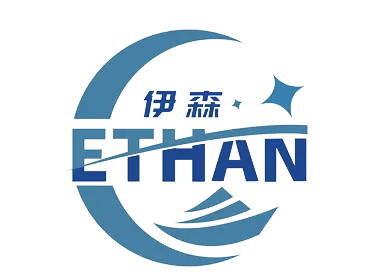Core Transportation Modes in Global Freight Forwarding
Ocean Freight: FCL vs LCL Shipping Strategies
For global freight forwarders, ocean freight remains a core part of their operations. Knowing the difference between FCL (Full Container Load) and LCL (Less than Container Load) shipping methods can make all the difference in managing expenses and getting things delivered on time. With FCL shipping, everything goes into its own container, reserved exclusively for one company's goods. This approach works best for businesses that regularly ship big volumes because they pay less per item and avoid those annoying delays caused by extra handling. The alternative is LCL shipping where several companies pool their cargo together in the same container. Sure, it ends up costing more per unit since folks are sharing space, but many small businesses or those who don't ship often find this arrangement much more practical. When deciding which option fits better, most shippers look at how much stuff needs moving, how often shipments happen, and what kind of money they have available for transport costs.
Air Freight Solutions for Time-Sensitive Cargo
When it comes to shipping stuff that needs to get somewhere fast, air freight remains the go-to option for things like fresh produce, medicines, and expensive gadgets because planes just move faster and are generally dependable. Healthcare companies and tech firms really rely on this mode of transport to keep their operations running smoothly since even small delays can mean big money down the drain. Sure, flying cargo costs way more than sending it by ship or truck, but companies often find that shorter travel times actually save them cash in the long run through reduced storage expenses and faster product availability in stores. For many businesses operating in markets where timing matters most, weighing these extra costs against the benefits of quick delivery isn't just math - it's survival.
Rail Freight: Balancing Cost and Sustainability
When it comes to moving goods across country, rail freight strikes just the right balance between saving money and being kind to the environment. Trains create way less pollution than trucks or planes, which is why they're so popular for shipping big loads over long stretches of land. From a financial standpoint, trains make sense too because they burn less fuel per ton of stuff being carried, especially when dealing with heavy items or massive volumes. Industries that need to move tons of stuff regularly find rail particularly useful. Think about farming communities sending out grain harvests or mining operations transporting ore from remote locations. To get the most out of rail networks, companies often combine train journeys with truck deliveries at either end, creating what's called intermodal shipping. This approach helps overcome some of the limitations of rail-only transport while still enjoying most of its benefits.
Road Transportation for Last-Mile Connectivity
Getting goods from distribution centers to people's homes really matters for good last mile delivery, that final link in the whole supply chain. When packages actually reach customers at their doorsteps, everyone feels satisfied. The tricky part? Things work differently depending on where folks live. Cities have all sorts of problems with heavy traffic and narrow streets making deliveries tough. Out in the country, companies struggle with long distances between stops and roads that aren't always great condition. Some smart solutions are popping up though. Real time GPS tracking lets drivers avoid delays, while electric trucks cut down on emissions and noise pollution. These improvements mean packages get there quicker and greener, which keeps customers happy even when weather or road closures throw a wrench into plans.
Intermodal Solutions for Supply Chain Efficiency
Seamless Integration of Multiple Transport Modes
Intermodal transport is really important for today's logistics networks because it brings together various forms of transport to make supply chains work better. Basically, what happens is companies combine different ways to get goods where they need to go railroads, trucks, ships, even planes sometimes all working together from start point to end point. When businesses mix these different transportation options, they tend to save money quite a bit, speed things up during shipping, and generally run their operations smoother. Take a look at major freight companies out there, especially ones connected via platforms like Container xChange. These folks have figured out smart ways to handle intermodal shipping that actually show off all those advantages we just talked about. They build strong relationships with partners across the board and coordinate carefully so cargo keeps moving between countries along paths that balance both cost savings and delivery speed effectively.
Digital Platforms Enabling Intermodal Coordination
Intermodal coordination has changed dramatically thanks to digital platforms that boost communication between all parties involved in shipping operations. Modern tech makes it much easier to book cargo space, track where containers are at any given moment, and manage complex logistics across different transportation methods. For most businesses, this means their supply chains run smoother and they get clearer visibility into what's happening with their goods. The numbers back this up too many companies using systems from providers like Container xChange notice big gains in how well everything coordinates. They save money because there are fewer delays and trucks spend less time sitting idle waiting for cargo. What these platforms really offer is constant stream of updates right when needed plus smart data analysis that helps decision makers react faster without guesswork.
Case Study: China-Europe Rail-Truck Hybrid Routes
China's growing rail-truck combo routes to Europe have become something of a hot topic in transport circles lately. The basic idea works pretty well actually combining the cost advantages of rail with the flexibility of trucks for final deliveries. Rail handles the long haul between major cities while trucks take over once goods reach border points or regional hubs. Of course there are hurdles to overcome including different regulations across countries and sometimes mismatched infrastructure standards. Still many logistics companies see real promise in expanding these routes elsewhere. For freight forwarders trying to cut costs without sacrificing service quality, this hybrid model could be a game changer worth watching closely.
Technology-Driven Innovations in Freight Forwarding
Real-Time Tracking Systems Enhancing Visibility
Real time tracking systems bring some pretty important advantages to freight forwarding operations these days. They give businesses a clear view of where their shipments actually are at any given moment, so customers get regular updates and things tend to arrive when they're supposed to. This visibility makes a big difference for supply chain decisions because managers can see exactly what's happening with each load. When there's a potential delay spotted early, logistics folks can jump on it before it becomes a bigger problem. Industry data shows something interesting too – companies that implement real time tracking report around 40% fewer transportation delays. While no system is perfect, this kind of improvement definitely boosts both operational efficiency and builds that all important customer confidence over time.
AI-Driven Route Optimization Reducing Costs
Artificial intelligence is changing how logistics works when it comes to figuring out the best routes based on all sorts of data, which leads to real money saved and better overall efficiency. Freight companies that use AI systems can actually see what traffic will look like ahead of time, cut down on driving around aimlessly, and pick transportation options that make financial sense instead of just going with whatever is available. The numbers back this up too. One research project showed that when companies optimize their routes through AI, they end up spending about 15 percent less on fuel while getting packages delivered 25 percent faster. Take UPS for instance. They've integrated AI into their operations and completely overhauled how they plan delivery routes across the country. Their experience shows just how much difference smart technology can make in making freight movement smarter and cheaper for businesses.
Automated Documentation Processes
The shift to automated documentation is changing how freight forwarders do business, making operations quicker while cutting down mistakes and improving compliance across the board. When companies automate their paperwork, they see fewer errors creep in during manual data entry, customs clearance happens much faster, and those tedious compliance checks get done without all the back and forth. This means less waiting around for shipments and documents that actually match what's being shipped. Take CargoWise for instance it's become pretty popular among logistics firms because it handles everything from bill of lading creation to tracking compliance requirements automatically. Some businesses report their document processing times dropped by about 30% after switching to automation. That kind of speed boost isn't just nice to have it's becoming essential for staying competitive in today's fast paced shipping environment where accuracy matters as much as delivery time.
Data Analytics for Capacity Forecasting
When businesses apply data analytics to capacity forecasting, they get much better at predicting what shipping needs will be next. This helps them manage their inventory and plan logistics more effectively. Looking at past trends and historical data allows companies to decide when to restock and how to run their logistics operations so everything matches what customers actually want. A recent study showed that companies who use advanced analytics cut down on both overstock situations and stock shortages by around 20%. Real world examples back this up too. The bottom line is that relying on data makes a big difference in getting capacity forecasting right, which ultimately makes supply chains work better and saves money across the board.
Regional Transportation Network Considerations
North America's Cross-Border Logistics Challenges
Moving goods across borders in North America isn't easy business. There are plenty of headaches when it comes to getting shipments from point A to B efficiently. The main problems? Different regulations across countries, constantly shifting tariffs, and the whole mess of customs paperwork that needs careful handling. Logistics companies have their work cut out staying on top of trade deals like USMCA while adjusting to new rules about what can come into or go out of each country. Recent numbers show that most of the freight moving around this continent actually travels between the United States, Canada, and Mexico. That makes sense why smart companies are looking for better ways to cut down on those frustrating delays and speed up deliveries without breaking the bank.
Asia-Pacific Infrastructure Growth Opportunities
Infrastructure across the Asia-Pacific is booming right now, opening up some serious business chances for logistics firms. We're seeing bigger ports get built out, rail lines stretching further, and roads getting upgraded all over the place. These developments are making it easier to move goods around the region and getting supply chains running smoother than before. Companies eyeing markets in places like Vietnam and Indonesia stand to benefit a lot from this trend. They can speed up how they handle cargo shipments and start building stronger positions in those growing economies. Big names in logistics, including DHL, have already started taking advantage of these new connections. Their services have gotten better because of it, and their transport routes work more efficiently now. This shows just how well businesses can adapt when there's real investment happening in local infrastructure.
European Union Regulatory Compliance Strategies
Freight forwarders looking to make it big in Europe need to get serious about understanding all those EU regulations. The whole compliance thing gets complicated fast with stuff like VAT rules, green laws, and customs paperwork that just keeps changing. Smart companies are setting up standard processes and investing in tech solutions to handle all the documentation without breaking a sweat. We've seen plenty of businesses hit hard when they miss even small regulatory details, which really drives home how critical good compliance practices actually are. Staying on top of these EU rules does more than just prevent headaches it builds trust with clients and gives companies a real edge over competitors who aren't paying attention to these details.

Value-Added Services Beyond Basic Transportation
Customs Clearance and Trade Compliance
Clearing customs remains one of those essential steps in international shipping that keeps goods moving across borders without getting stuck at ports for weeks on end. Getting through customs isn't just about paperwork though it definitely involves knowing exactly what documents each country wants before anything arrives. Compliance with trade rules actually affects how well logistics companies run their operations because they need to follow all sorts of international regulations regarding imports and exports. When businesses fail to comply, they risk paying hefty fines, losing cargo entirely, or damaging their reputation in the market. The International Chamber of Commerce reported cases where companies paid penalties equaling 40% of what their shipments were worth simply because they missed some regulatory requirement. Real world problems include constantly shifting tariffs between countries and mistakes made while preparing customs documents. Logistics firms that take time to understand these issues tend to handle border crossings much smoother, which ultimately helps them deliver better results for clients who rely on timely deliveries.
Cargo Insurance and Risk Mitigation
International freight forwarders need cargo insurance because it protects against all sorts of losses and damage that happen when goods are moving around the world. Things like storms at sea, pirates off coastlines, or warehouses getting robbed can wipe out thousands of dollars worth of merchandise overnight if there's no coverage. Smart logistics firms don't just hope for the best they actually work on reducing risks through proper planning. They do regular checks on what could go wrong, implement solid security measures at ports and warehouses, and team up with trusted insurance providers who understand shipping risks. Industry data shows about 5% of cargo gets lost or damaged each year globally, which makes insurance absolutely critical for anyone serious about protecting their investments. Companies that invest in good insurance policies keep running smoothly even when bad things happen to other businesses.
Temperature-Controlled Logistics Solutions
Keeping things at the right temperature during transport matters a lot when moving delicate stuff like meds, perishable foods, and chemical products. To keep these goods intact all the way through shipping, companies need special logistics setups that can control temps from start to finish. Modern tech helps out here too, with things like GPS trackers showing where shipments are and coolers that stay at just the right setting. The pharma world depends on this kind of transport big time to make sure drugs work properly once they reach stores or hospitals. Take vaccines for example they have to stay within very narrow temp ranges the whole time they're being shipped around. With more people needing this sort of service now, logistics firms face pressure to come up with better systems and spend money on upgrades if they want to keep up with what industries actually need these days.
FAQ Section
What is the difference between FCL and LCL shipping in ocean freight?
FCL (Full Container Load) involves transporting goods in a dedicated container for one customer's cargo, suitable for large quantities. LCL (Less than Container Load) consolidates multiple shipments into a single container, ideal for smaller or infrequent consignments.
Why is air freight preferred for time-sensitive cargo?
Air freight offers speed and reliability, crucial for perishable goods, pharmaceuticals, and electronics, despite being more expensive than ocean or land options.
How do rail freight services benefit businesses?
Rail freight offers cost-effectiveness and sustainability with fewer emissions, suitable for bulk shipments over long distances.
Why is road transportation important for last-mile delivery?
Road transport ensures direct delivery to consumer doors and addresses challenges impacting customer satisfaction in urban and rural settings.
How do digital platforms aid intermodal logistics?
Digital platforms enhance booking, tracking, and management efficiency across various transport modes, boosting supply chain transparency.
What role does AI play in freight forwarding?
AI optimizes logistics networks by predicting traffic patterns, reducing travel time, and selecting cost-effective transport modes.
How important is cargo insurance in freight forwarding?
Cargo insurance protects against losses or damages during transit due to unforeseen events like natural disasters or theft.
Table of Contents
- Core Transportation Modes in Global Freight Forwarding
- Intermodal Solutions for Supply Chain Efficiency
- Technology-Driven Innovations in Freight Forwarding
- Regional Transportation Network Considerations
- Value-Added Services Beyond Basic Transportation
-
FAQ Section
- What is the difference between FCL and LCL shipping in ocean freight?
- Why is air freight preferred for time-sensitive cargo?
- How do rail freight services benefit businesses?
- Why is road transportation important for last-mile delivery?
- How do digital platforms aid intermodal logistics?
- What role does AI play in freight forwarding?
- How important is cargo insurance in freight forwarding?


